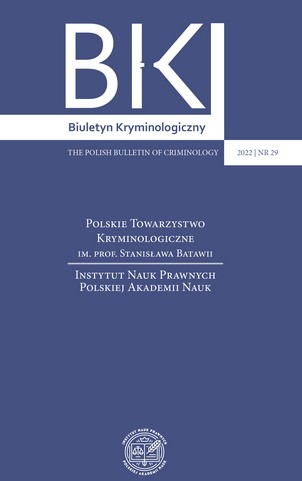Wybrane metody wykrywcze stosowane w procesach poszlakowych o zabójstwo
Selected detection methods used in circumstantial homicide trials
Author(s): Diana BrzezińskaSubject(s): Criminal Law, Methodology and research technology, Criminology
Published by: Polskie Towarzystwo Kryminologiczne im. prof. Stanisława Batawii
Keywords: preparatory proceedings; crime detection methods; circumstantial chain; case study analysis;
Summary/Abstract: The aim of the article is to analyse selected detection methods used in circumstantial homicide trials, which ultimately led to the conviction of the perpetrators, in terms of their usefulness in the criminal cases. At the same time, it is a discussion of homicide cases in which there was no corpus delicti and an unbreakable chain of circumstantial evidence led to a conviction. The standard detection methods were analysed, such as the use of service dogs to detect and locate the smell of human corpses or the sonar method, as well as unusual methods of detection, such as the use of expert opinions in the field of parapsychology meant to determine what happened to the victim’s body or undercover operational police officers to establish what happened to the victim. The analysis shows that the use of the non-standard detection methods by investigative bodies takes place when standard detection methods do not bring the expected results, explain the actual course of events, locate the victim’s body or bring the perpetrator to criminal liability. However, not every application of a non-standard detection method has a positive effect on the criminal proceedings or proves to be key in clarifying the details of the case. The article is based on an analysis of court files in seven circumstantial homicide cases, in which the perpetrators were convicted despite a lack of corpus delicti.
Journal: Biuletyn Polskiego Towarzystwa Kryminologicznego im. prof. Stanisława Batawii
- Issue Year: 2022
- Issue No: 29
- Page Range: 145-164
- Page Count: 20
- Language: Polish

